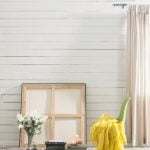Are you someone with a keen eye for design and a passion for creating beautiful spaces? Have you ever dreamed of starting your own home decor line, bringing your unique style and creations to the market? Well, you’re in luck.
The world of home decor is booming, offering countless opportunities for aspiring entrepreneurs like yourself. In this article, we will explore the lucrative industry of home decor, discuss the increasing demand for personalized items, and delve into how you can turn your passion into a profitable venture.
Home decor is no longer just about furnishing a space; it has become an essential means of self-expression and personal style. With more people investing in their homes and seeking unique pieces that reflect their individuality, there has never been a better time to enter the home decor industry. From furniture to accessories, wall art to textiles, there is an ever-growing market awaiting your creative touch.
One of the most exciting aspects of starting your own home decor line is being able to channel your passion into a profitable business venture. Imagine turning something you absolutely love into a successful career that brings both joy and financial reward. With the right strategies and dedication, it’s completely achievable. So let’s dive in and discover how you can make your dream of owning a home decor line a reality.
Identifying your niche and target market in the home decor industry
In order to start your own successful home decor line, it is crucial to identify your niche within the industry and understand your target market. By finding a unique selling proposition (USP) and catering to a specific audience, you can stand out from competitors and create a loyal customer base. Here are some key steps to help you identify your niche and target market:
- Develop your USP: Think about what sets your home decor line apart from others in the market. This could be anything from specializing in sustainable materials, offering personalized products, or focusing on a specific design aesthetic. By having a clear USP, you can differentiate yourself and attract customers who resonate with your values or offerings.
- Conduct market research: Take the time to understand your target audience’s preferences, needs, and purchasing behaviors. This can be done through surveys, interviews, or analyzing existing data about consumer trends in the home decor industry. By gaining insights into what motivates potential customers in their buying decisions, you can tailor your product offerings to meet their desires.
- Identify gaps or untapped opportunities: Look for areas within the home decor industry that are underserved or have limited competition. This could mean focusing on a particular room in the house such as children’s bedrooms or outdoor spaces, or targeting a specific demographic like first-time homeowners or renters with limited space. By identifying these gaps, you can fill them with innovative and unique products that cater to an unmet need.
Once you have identified your niche and target market, you can further refine your brand messaging and marketing strategy to effectively reach and engage with potential customers. Remember that understanding who they are and what they want is key to creating products that resonate with them and building a successful home decor business.
Creating a strong brand identity for your home decor line
Creating a strong brand identity is crucial when starting your own home decor line. Your brand will not only differentiate you from competitors, but it will also establish credibility and attract customers. To create a compelling brand identity, there are several key elements to consider.
First, develop a compelling brand story and mission statement that resonates with your target audience. This will give your brand depth and meaning, allowing customers to connect with your values and purpose. Consider why you are passionate about home decor and how your products can enhance the lives of others.
Next, choose a memorable and eye-catching brand name that reflects the essence of your home decor line. Your brand name should be easy to remember, pronounce, and spell. Conduct research to ensure that the name you choose is not already trademarked or in use by another company.
Designing a visually appealing and cohesive brand logo and packaging is another important aspect of creating a strong brand identity. Your logo should be simple, versatile, and identifiable across different marketing materials such as websites, social media profiles, product packaging, and promotional items. Consistency in design elements, color schemes, fonts, and imagery will also help strengthen your brand identity.
Remember that building a strong brand identity takes time and effort. It requires consistent messaging through all customer touchpoints including website content, social media posts, product descriptions, and customer communications. By investing in developing a strong brand identity for your home decor line from the start, you will set yourself up for success in the competitive market.
Sourcing and selecting high-quality materials for your home decor products
The importance of sourcing high-quality materials
When starting your own home decor line, one of the key factors that will set you apart from competitors is the quality of the materials used in your products. Customers today are more discerning than ever before and want products that not only look good but also last long. By sourcing and selecting high-quality materials, you can ensure that your home decor products meet or exceed customer expectations.
Exploring different options for sourcing materials
There are numerous options available when it comes to sourcing materials for your home decor products. It is important to explore a variety of suppliers and manufacturers to find the best fit for your brand and product line. Consider factors such as cost, quality, lead time, and sustainability when evaluating potential partners.
Start by researching local suppliers and manufacturers who specialize in home decor materials. They often have a wealth of knowledge and expertise in this field and can provide valuable advice on choosing the right materials for your specific products. Additionally, consider attending trade shows or industry events where you can connect with potential suppliers face-to-face.
Evaluating material quality, durability, and eco-friendliness
When assessing different materials, take into account their quality, durability, and eco-friendliness. Look for materials that are known for their longevity and resistance to wear and tear. This will ensure that your customers are satisfied with the longevity of their purchase.
In addition to quality and durability, consider the environmental impact of the materials you choose. With growing awareness about sustainable living, many customers prefer eco-friendly options. Look for suppliers who offer environmentally friendly alternatives or who prioritize sustainable practices in their manufacturing process.
By sourcing high-quality materials that align with your brand values, you can create products that stand out in the market and build trust with your customers.
Designing and developing your home decor products
Once you have identified your niche and target market, it is time to start designing and developing your home decor products. This is where your creativity and passion for home decor truly shine. Here are some steps to guide you through the process:
- Sketching and conceptualizing your product ideas: Start by sketching out your product ideas on paper or using design software. Consider the functionality, aesthetics, and unique features that will set your products apart from competitors. Think about how these products will enhance the overall look and feel of a home.
- Creating prototypes and conducting product testing: Once you have a clear vision of what you want to create, it’s important to bring those ideas to life through prototyping. Create prototypes of your designs using different materials to test their feasibility and functionality. Gather feedback from potential customers or industry experts to refine your designs before moving forward.
- Collaborating with skilled artisans or designers: Depending on your skills and resources, consider collaborating with skilled artisans or designers who can help bring your vision to life. They can provide expertise in areas such as woodworking, sewing, ceramics, or metalwork. Collaborating with experts in their respective fields can elevate the quality and craftsmanship of your products.
Throughout this process, keep in mind the importance of maintaining consistency with your brand identity. Ensure that each product reflects the values, aesthetics, and overall style that aligns with your target market’s preferences.
Remember that constant innovation is key in the home decor industry, so stay open to evolving trends and customer demands. Regularly review feedback from customers and make necessary adjustments or additions to improve upon existing products or create new ones that fill gaps in the market.
By designing and developing high-quality home decor products that resonate with customers’ needs and desires, you are laying a strong foundation for a successful home decor line.
Crafting a compelling marketing strategy for your home decor line
One of the key strategies to consider is utilizing social media platforms to showcase your products and engage with your target audience. Platforms like Instagram, Pinterest, and Facebook are particularly popular in the home decor industry due to their visual nature.
You can create visually appealing posts featuring your home decor products, share behind-the-scenes content, and engage with followers through comments, direct messages, and contests. Additionally, collaborating with influencers and bloggers in the home decor niche can help you gain exposure to a wider audience and build credibility for your brand.
Another crucial aspect of your marketing strategy is planning creative and eye-catching visuals for your campaigns. Visual content plays a significant role in capturing the attention of potential customers. You can create stunning product images or videos that highlight the unique features or craftsmanship of your home decor items. Consider investing in professional photography or partnering with talented content creators who specialize in showcasing home decor products.
To ensure the success of your marketing efforts, it is important to define clear goals and metrics for tracking performance. This will help you measure the effectiveness of different campaigns or initiatives and make data-driven decisions for future marketing strategies. Understanding customer preferences and trends within the home decor industry will also aid in tailoring your messaging and promotions to resonate with your target audience.
Table
| Marketing Strategy Channels | Description |
|---|---|
| Social Media Platforms | Utilize Instagram, Pinterest, Facebook to showcase products, engage with customers |
| Influencer Collaborations | Collaborate with popular influencers and bloggers in the home decor niche to gain exposure |
| Visual Content Creation | Plan creative and eye-catching visuals for marketing campaigns, including professional photography or partnering with content creators specializing in home decor products |
| Goal Setting & Performance Tracking | Define clear goals and metrics to measure the effectiveness of campaigns and make data-driven decisions for future strategies |
| Understanding Customer Preferences & Trends | Gather insights on customer preferences and industry trends to tailor messaging and promotions accordingly |
Setting up an online store and managing sales for your home decor line
Firstly, choosing the right e-commerce platform is essential for your online store. There are various platforms available, such as Shopify, WooCommerce, and BigCommerce, each offering different features and functionalities. Consider factors like ease of use, customizability, payment options, and integration with other tools when selecting the platform that best fits your needs.
Once you have chosen an e-commerce platform, it’s important to optimize your website for search engines to drive organic traffic. Implementing SEO strategies like keyword research, optimizing meta tags and descriptions, and creating valuable content relevant to home decor can significantly improve your website’s visibility in search engine results.
To successfully manage sales for your home decor line, implementing effective inventory management and order fulfillment processes is crucial. Keep track of your stock levels to ensure you have sufficient inventory to meet customer demand without overstocking. Automating these processes through inventory management software can help streamline operations and prevent fulfillment issues.
To provide exceptional customer service in the online space, promptly address feedback or concerns from customers. Utilize customer relationship management (CRM) tools to collect customer data and personalize their shopping experiences. This can include personalized product recommendations based on their past purchases or preferences.
In summary, setting up an online store requires careful consideration of the e-commerce platform you choose along with implementing effective inventory management and order fulfillment processes. Additionally, providing exceptional customer service through personalized experiences can help build loyalty and contribute to the success of your home decor line.
| Aspect | Key Considerations |
|---|---|
| Choosing an e-commerce platform | – Ease of use
|
| Optimizing website for search engines | – SEO strategies (keyword research, meta tags, valuable content) |
| Inventory management and order fulfillment | – Tracking stock levels
|
| Exceptional customer service | – Addressing feedback or concerns promptly
|
Building customer loyalty and expanding your home decor line
Building customer loyalty is crucial for the success and growth of any business, including a home decor line. By focusing on creating exceptional customer experiences and continuously improving your products and services, you can cultivate a loyal customer base that will not only keep coming back but also spread positive word-of-mouth about your brand.
Providing exceptional customer service
One of the key ways to build customer loyalty is by providing exceptional customer service. This includes being responsive to customer inquiries, resolving issues promptly and effectively, and going above and beyond to ensure customer satisfaction. By making your customers feel valued and appreciated, they are more likely to become loyal advocates for your brand.
Collecting and utilizing customer data
Collecting customer data is essential for understanding your customers’ preferences, buying behaviors, and demographics. By utilizing this data effectively, you can personalize their shopping experiences and offer tailored recommendations based on their interests. This personalization not only enhances the overall experience but also helps build strong connections with your customers.
Continuously innovating and expanding
To stay competitive in the home decor industry, it is important to continuously innovate and expand your product line. Pay attention to emerging trends in home decor as well as feedback from your customers to identify areas for improvement or new product opportunities. Regularly introducing new designs or styles will keep your customers engaged and excited about what you have to offer.
Conclusion
In conclusion, starting your own home decor line can be a rewarding and profitable venture. With the booming world of home decor and the increasing demand for unique and personalized items, there are countless opportunities to turn your passion into a successful business. By identifying your niche, conducting thorough market research, and creating a strong brand identity, you can position yourself effectively within the industry.
Sourcing high-quality materials and working with skilled artisans or designers will ensure that your home decor products stand out in the market. Developing a compelling marketing strategy using social media platforms, collaborating with influencers, and planning creative visuals will help you gain exposure and attract customers. Setting up an online store and managing sales efficiently will allow you to reach a wider audience and maximize your profits.
Building customer loyalty through exceptional service and personalization is key to sustaining and growing your home decor line. By continuously innovating and expanding your product line to cater to evolving customer demands, you can stay ahead of the competition and remain relevant in the industry.
Starting your own home decor line offers endless possibilities for growth and expansion. The satisfaction of seeing your products thrive, as well as the potential for building a successful business in a lucrative industry, should serve as encouragement for aspiring entrepreneurs to take the leap. So don’t hesitate – if you have a passion for home decor, now is the time to turn it into a thriving business venture.
Frequently Asked Questions
How can I start my own decor business?
Starting your own decor business requires careful planning and preparation. Firstly, identify your target market and niche. Determine the specific type of decor items you want to specialize in, such as vintage, modern, or handmade goods. Next, create a comprehensive business plan that outlines your vision, goals, target customers, pricing strategy, and marketing tactics.
Establish relationships with suppliers or artisans who can provide you with unique and high-quality decor items at competitive prices. Build an online presence by setting up a website or utilizing social media platforms to showcase your products and attract customers. Consider participating in local art fairs or home decor expos to gain exposure and network with potential customers and industry professionals.
How profitable is home decor business?
The profitability of a home decor business can vary depending on various factors such as market demand, competition, pricing strategy, and operational costs. However, the home decor industry generally offers opportunities for profitability due to the consistent demand for stylish and functional decor items. With effective marketing strategies and strong branding efforts, you can attract a loyal customer base that is willing to pay a premium for unique and high-quality products.
It is essential to carefully manage your expenses including sourcing costs, overhead costs, employee wages (if applicable), and operating expenses to maximize profit margins. Regularly analyzing sales data and consumer trends will also help you make informed decisions that contribute to the profitability of your business.
How to start selling home decor items?
To start selling home decor items successfully, it is crucial to begin with thorough market research and product selection. Identify popular trends in home decor by studying industry publications, following interior design blogs/social media accounts, and attending trade shows or exhibitions.
Narrow down your product range based on customer preferences while ensuring diversity within your offerings. Source products from reliable suppliers or artisans who can consistently deliver quality items while providing competitive pricing terms.

I’m thrilled to be your companion on this exciting journey through the world of home decor and design. With a passion for turning houses into homes and a keen eye for the finer details, I’m here to help you transform your living spaces into beautiful, functional, and meaningful havens.





